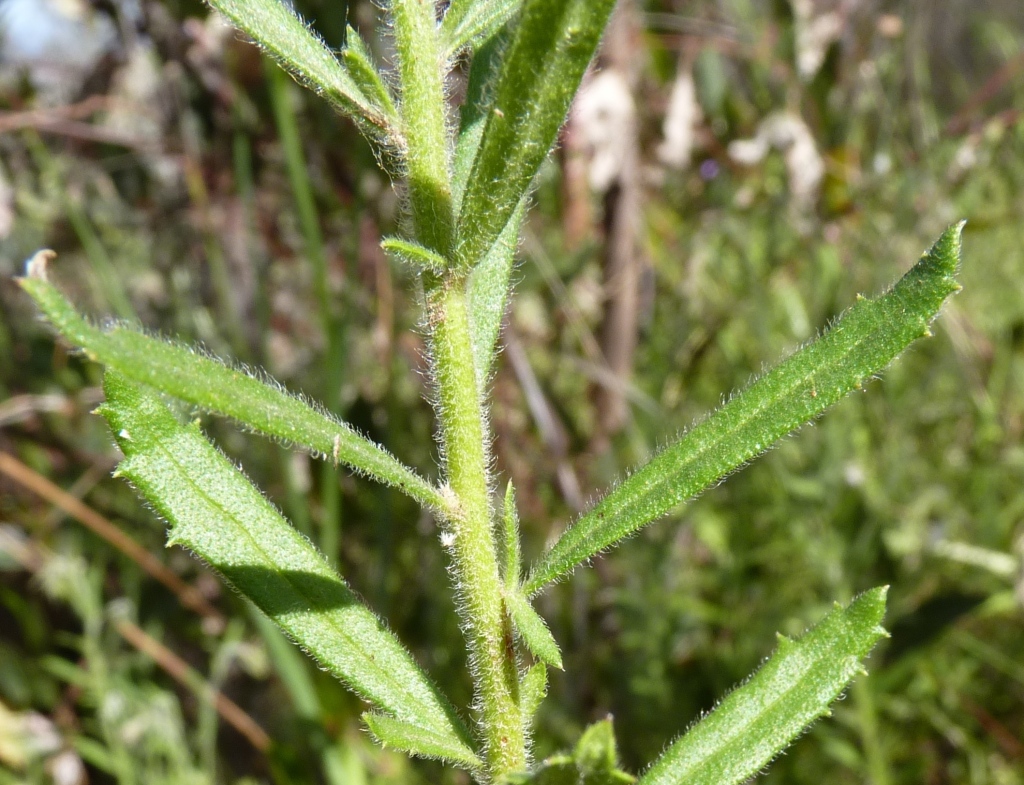Gonocarpus elatus
(A.Cunn. ex Fenzl) Orchard Tall RaspwortPerennial herb or subshrub 18–35(–60) cm tall, erect or ascending; stems slightly 4–5-ribbed, covered with long, stiff, spreading hairs to 1 mm long. Leaves alternate, linear-lanceolate to ovate, 1–4 cm long, 2–8 mm wide, densely pilose, sessile, margins revolute, entire or toothed only in distal half; bracts 2–3 mm long, pilose; bracteoles lanceolate, 0.8–1 mm long, entire, brown. Pedicel 0.3–0.4 mm long; sepals 0.6–0.8 mm long, margins thickened, basal callus present; petals reddish-brown, 2.1–2.7 mm long; stamens 8, anthers 2–2.3 mm long; ovary globose to ovoid, 0.9–1.2 mm long, white to grey or brown, weakly 8-ribbed, pilose, smooth or with 3 or 4 irregular transverse rows of tubercles, stigmas yellow. Fruit 1.2–1.5 mm long. Flowers Oct.–Jan.
LoM, MuM, Wim, VVP, VRiv, OtP, Gold, CVU, GGr, DunT, NIS, EGU, HSF, HNF, OtR, MonT, VAlp. Also SA, Qld, NSW, ACT. Widespread in Victoria, mostly on dry, rocky hillsides and rock outcrops.
Readily identified by its alternate leaves and long silky indumentum. Hybrids between this species and G. mezianus have been observed in the Grampians and South Australia. A glabrous variant, growing with normal hairy plants, has been noted at Mt Arapiles.
Jeanes, J.A. (1996). Haloragaceae. In: Walsh, N.G.; Entwisle, T.J., Flora of Victoria Vol. 3, Dicotyledons Winteraceae to Myrtaceae, pp. 887–908. Inkata Press, Melbourne.
 Spinning
Spinning


